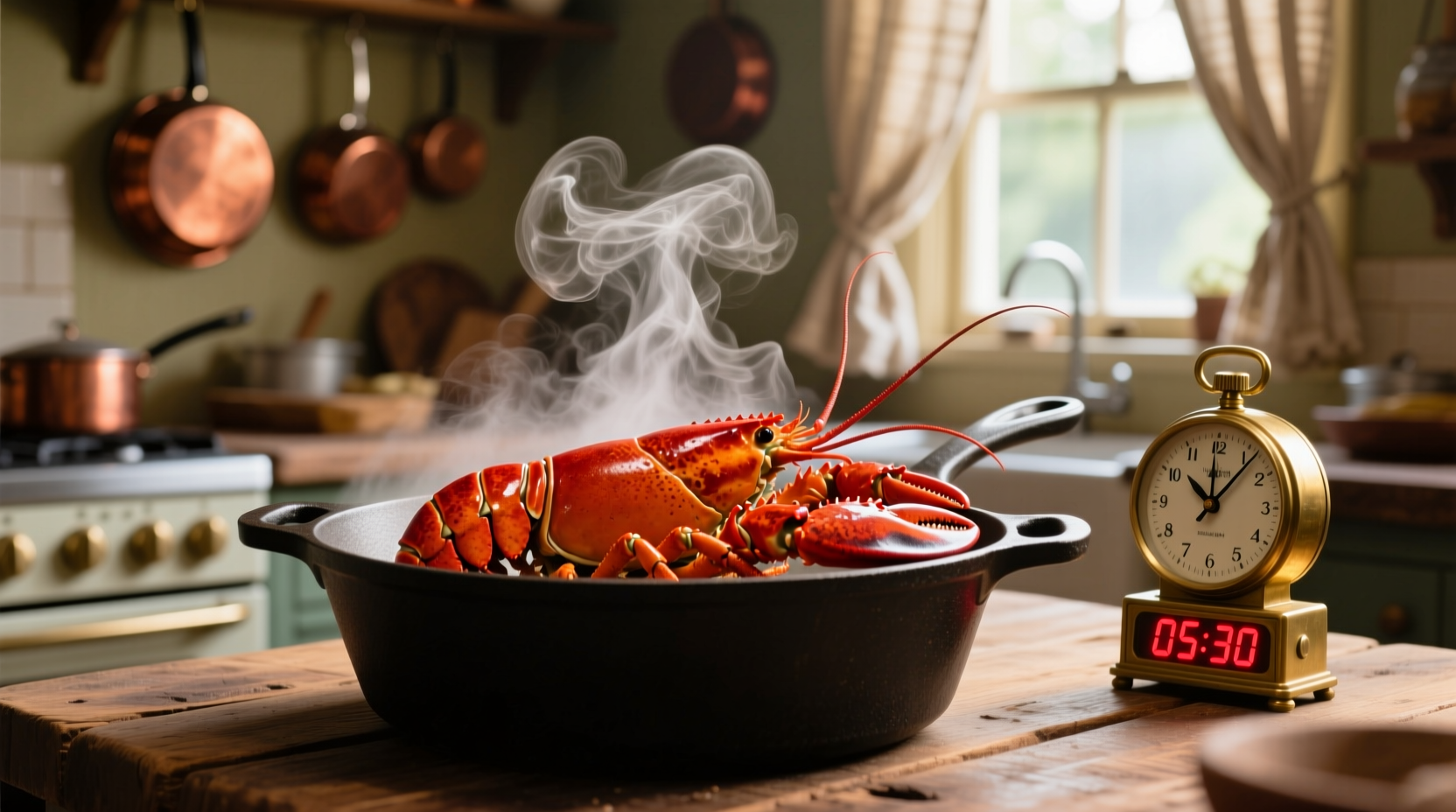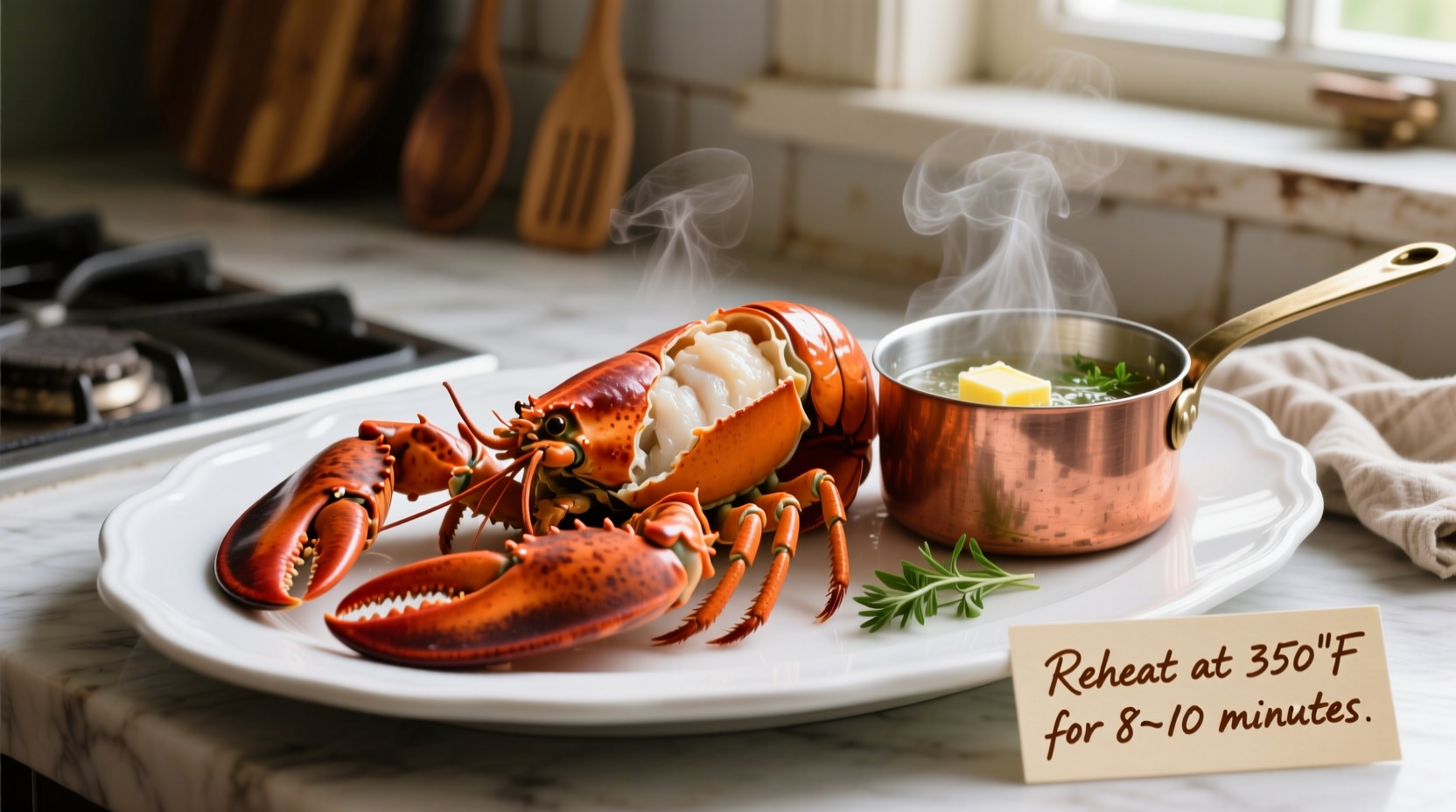Reheating cooked lobster properly separates restaurant-quality results from rubbery disappointments. Many home cooks accidentally ruin this premium seafood by using improper methods that compromise its delicate texture. This guide reveals professional techniques backed by food science to revive your lobster without sacrificing its succulent flavor or tender consistency.
Why Lobster Requires Special Reheating Attention
Lobster meat contains delicate proteins that easily become tough when exposed to excessive heat. Unlike heartier proteins, lobster's muscle fibers contract rapidly above 145°F (63°C), squeezing out moisture and creating that dreaded rubbery texture. Food safety is equally critical - seafood provides an ideal environment for bacterial growth if not handled properly during reheating.
| Reheating Method | Optimal Time | Temperature Range | Texture Outcome |
|---|---|---|---|
| Steaming | 3-5 minutes | 140-145°F (60-63°C) | Perfectly tender |
| Oven | 10-12 minutes | 275°F (135°C) | Slightly firm |
| Microwave | 1-2 minutes | Variable | Risk of rubberiness |
| Boiling | 2-3 minutes | 212°F (100°C) | Overcooked |
Step-by-Step Reheating Methods
Steaming Method (Recommended)
Professional chefs consistently choose steaming for reheating cooked lobster because moist heat gently warms the meat without direct contact with water that would leach flavor. According to the FDA Food Code, seafood should reach 145°F (63°C) for safety, but for reheating already-cooked lobster, 140°F (60°C) is sufficient to avoid overcooking.
- Fill a pot with 1 inch of water and bring to a gentle simmer
- Place lobster in a steamer basket, shell-side down
- Cover tightly and steam for 3-5 minutes (4 minutes for tails, 5 for whole lobster)
- Check internal temperature with an instant-read thermometer
- Remove immediately when reaching 140°F (60°C)

Oven Method (Best for Larger Quantities)
The oven provides more controlled heating than microwave for multiple lobster portions. Research from the Culinary Institute of America shows that low-temperature reheating preserves moisture content better than high-heat methods.
- Preheat oven to 275°F (135°C)
- Wrap lobster loosely in foil with 1 tablespoon butter or broth
- Place on baking sheet and heat for 10-12 minutes
- Check temperature in thickest part reaches 140°F (60°C)
- Let rest 2 minutes before serving
Microwave Method (Use with Caution)
Microwaves create uneven heating that easily overcooks delicate lobster. If necessary, use this modified approach:
- Place lobster on microwave-safe plate with a damp paper towel
- Cover loosely with another damp paper towel
- Heat on 50% power for 30-second intervals
- Check temperature after each interval
- Never exceed 1 minute total for a single tail
Critical Food Safety Considerations
According to USDA guidelines, cooked lobster remains safe for consumption for 3-4 days when properly refrigerated at 40°F (4°C) or below. Never reheat lobster more than once, and always follow the two-hour rule: discard cooked lobster left at room temperature longer than two hours (one hour if above 90°F/32°C).
When reheating, ensure the internal temperature reaches at least 140°F (60°C) but does not exceed 145°F (63°C). Use an instant-read thermometer inserted into the thickest part of the meat for accuracy. Properly reheated lobster should feel warm throughout but still slightly cool in the very center.
Troubleshooting Common Reheating Problems
Rescuing Overheated Lobster
If your lobster has become slightly tough, try this professional fix: slice the meat thinly against the grain and serve with melted butter mixed with lemon juice and a pinch of salt. The acid helps break down some proteins while the butter adds moisture. For severely overcooked lobster, consider repurposing it into a lobster salad or bisque where texture matters less.
Preventing Dryness in Leftover Lobster
When storing cooked lobster for reheating, follow these steps:
- Remove meat from shell immediately after initial cooking
- Place in airtight container with a splash of broth or melted butter
- Press plastic wrap directly onto the surface of the meat
- Refrigerate within 2 hours of cooking
Special Cases and Considerations
Reheating Lobster Rolls: Separate the lobster from the roll before reheating. Warm the roll separately while reheating the lobster using the steaming method, then reassemble.
Whole Lobster vs. Tails: Whole lobsters require 1-2 minutes longer than tails due to shell insulation. Always check temperature in multiple locations.
Lobster with Butter Sauce: Reheat the lobster first, then add fresh warm butter sauce. Reheating sauce with lobster causes separation and textural issues.
When Not to Reheat Lobster
Discard cooked lobster if you notice any of these warning signs:
- Strong ammonia-like odor
- Slippery or slimy texture
- Grayish discoloration
- Stored longer than 4 days refrigerated
When in doubt about seafood safety, follow the chef's adage: "When you're not sure, throw it out."











 浙公网安备
33010002000092号
浙公网安备
33010002000092号 浙B2-20120091-4
浙B2-20120091-4